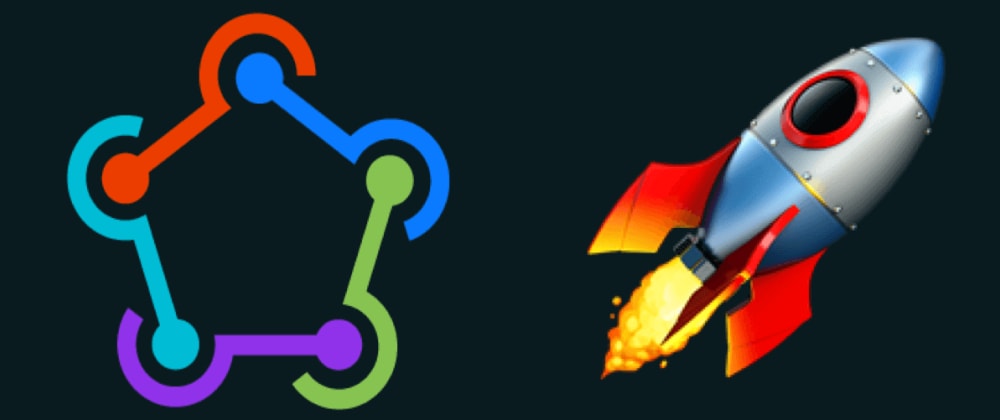Originally posted at carloscuesta's blog
Building native applications with React (JavaScript) is awesome â¤ï¸. Until the time you have to release a new build, specially, if you are not an iOS or Android native developer. The process of shipping manually an application to the stores is a painful and time consuming experience, even though it's documented.
That's when Fastlane comes to the rescue ⛑! In this post I'll explain how to automate the release process for an iOS ðŸ and Android 🤖 application. Handling the most common tasks such as: Code signing, App builds, Beta distribution and much more! Actually we use Fastlane at Ulabox for building our react-native apps.
Fastlane is the tool to release your iOS and Android app
It handles all tedious tasks, like generating screenshots, dealing with code signing, and releasing your application.
Getting Started
Before installing Fastlane make sure you have the latest Xcode command line tools installed, then install Fastlane ⬇ï¸.
$ brew cask install fastlane
Once installed, create a fastlane/ 📠folder inside of your react-native project at the root level. Then, create a file called Fastfile within this directory â˜ï¸.
The Fastfile is the place where we're going to code the lanes. A lane contains a group of actions that will be executed synchronously in order to automate a process. An action, is a function that performs a task.
Let's get started with this Fastfile base template, as you can see there's a before_all hook, that basically performs a health check 👨”âš•ï¸, with three actions, to ensure that you're on the latest master branch with a clean status.
fastlane_version '2.53.1'
before_all do
ensure_git_branch
ensure_git_status_clean
git_pull
end
platform :ios do
# iOS Lanes
end
platform :android do
# Android Lanes
end
Also we've defined the two platforms that we're going to use ðŸ and 🤖 which will contain the specific lanes for each context. Having the platforms defined allows us to execute lanes like that: fastlane ios lane fastlane android lane.
Code sign
iOS
The best way to code sign it's match, before integrating match into a lane you have to:
- Nuke the existing profiles and certificates.
-
Setup match through the
initoption. - Create a lane on the
iosplatform that uses match.
desc 'Fetch certificates and provisioning profiles'
lane :certificates do
match(app_identifier: 'com.app.bundle', type: 'development', readonly: true)
match(app_identifier: 'com.app.bundle', type: 'appstore', readonly: true)
end
Now you can run fastlane ios certificates or use cerfiticates as a function in another lane. match will automagically save the provisioning profiles and certs on your OS X Keychain.
Android
Automatically when you build an Android application using the assemble task in Release mode the application will be signed. But first you need to generate or fetch the signing key and add it to the project, so take a look at this facebook guide to know how to do it.
Build
iOS
To generate a signed build we're going to create a lane that uses the cerficates lane that we've created before and gym to compile our application. At the end of the process we want to increment the build number in order to ship our application to beta testing services.
desc 'Build the iOS application.'
private_lane :build do
certificates
increment_build_number(xcodeproj: './ios/name.xcodeproj')
gym(scheme: 'name', project: './ios/name.xcodeproj')
end
Android
To generate a signed .apk we're going to create a build lane. As you can see we're using the gradle action, to clean the project and assemble a release build, with gradle tasks.
desc 'Build the Android application.'
private_lane :build do
gradle(task: 'clean', project_dir: 'android/')
gradle(task: 'assemble', build_type: 'Release', project_dir: 'android/')
end
Then automate the versionCode bump, by hooking up the assembleRelease with this little task.
Beta distribution
iOS
Testflight âœˆï¸ is the way to go when it comes to iOS beta testing. Works really good, though the Developer Portal is slightly confusing. With pilot we can manage our TestFlight builds.
The beta lane will use the build lane to provide a signed .ipa to Pilot, then is going to commit and push the changes produced by increasing the build number and finally will upload the local build to Testflight. 🎉
desc 'Ship to Testflight.'
lane :beta do
build
pilot
commit_version_bump(message: 'Bump build', xcodeproj: './ios/name.xcodeproj')
push_to_git_remote
end
Android
Android uses the Playstore to share beta builds. We can automate that with fastlane too!
The beta lane for Android is nearly the same as iOS, uses the build lane to generate the signed .apk, commits the versionCode changes and using supply promotes the local build to Playstore as a beta release. ✨
desc 'Ship to Playstore Beta.'
lane :beta do
build
supply(track: 'beta', track_promote_to: 'beta')
git_commit(path: ['./android/gradle.properties'], message: 'Bump versionCode')
push_to_git_remote
end
Integration as scripts
I strongly recommend to add fastlane as npm scripts to make it part of your current build system.
"scripts": {
"ios:beta": "fastlane ios beta",
"android:beta": "fastlane android beta"
}
And that's all! Kudos to Felix Krause and all the people behind Fastlane ðŸ‘







Top comments (4)
Great write up - I had the (at the time) pain of setting up an RN project with Fastlane. Had to stumble through a lot of the configuration myself.
You should have a look at adding in your store listing data as part of the build too - it's an easy way to make sure that your listing goes live with a new version (if there's new features etc).
Anyone who is doing mobile apps development should be on Fastlane - there's no reason not to use it, and it's simple to work with tools like RN (or Phonegap, Ionic etc. etc.).
For sure! There are a lot of automations that aren't covered in this post, such as making screenshots, automating changelogs etc. 😊
Nice post!
I was baffled when I started with React-Native and Fastlane saved me.
Thanks!